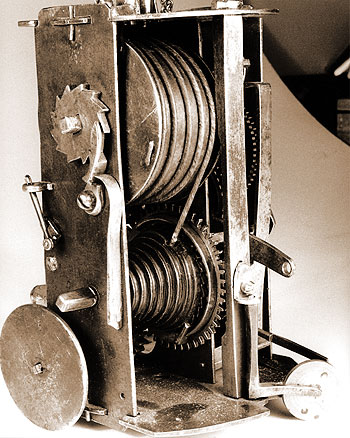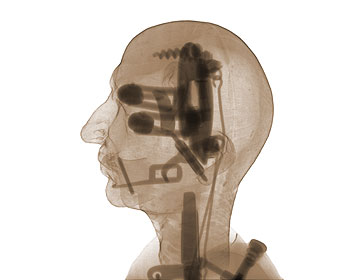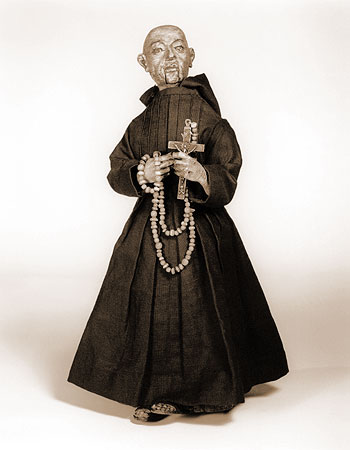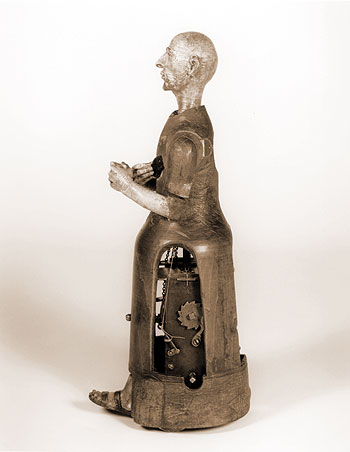 print preview
print previewback ISAAC LEE
The Most Ingenious Artist: An Internet Adventure from the COVID Lockdown
[T]here must have existed, at some time, and at some place or other, an artificer or
artificers, who formed [the watch] for the purpose which we find it actually to
answer; who comprehended its construction, and designed its use . . .
—William Paley
To “tell what actually happened” as Leopold von Ranke promised history would do is
impossible! We will always get a story inside a story.
—Elizabeth King
I
I’m dreaming of the Smithsonian National Museum of American History. Dreaming and following, I think, in someone else’s footsteps, though I’m not entirely sure whose. I know the museum claims to have “the original Star-Spangled Banner” on display, which I’d very much like to see, but my feet are guiding me elsewhere.
 |
|
| .. |
I’ve had to request a special audience to view the object that I’ve come to see. Martin Eliasson, a tall Swedish man in thick glasses, entirely fictitious, welcomes me in his clipped, rather brittle accent. After exchanging some pleasantries about my flight, he smiles, “Well, welcome to the National Museum of American History. The exhibit is through here if you want to come this way.” I like to think that if I’d been granted an audience with the famed Mechanical Turk, I would have strode in like some eighteenth-century Poirot, flourished my cane, and rapped it on the side of the great coffer in just the right place to spring the secret door and reveal the hidden player inside, but what greets me in the basement is something altogether more strange.
Though the monk’s eyes are unseeing, he turns his head as I approach, the way that blind men do—by force of habit. His mouth opens as if he is about to say something, but he turns away to continue walking the little penitent trapezoid he traces wherever he is placed, pausing to strike his chest and kiss his rosary as if in an excess of passion—Mea culpa!—but at such regular intervals one realises all this has been minutely planned, that someone wanted a machine to move exactly like a monk at his devotions.1 Tibetan Buddhists believe that an author imbues whatever he writes with the sentiment and intentions he held when writing, so prayers are carved into wooden wheels and mounted so as to spin in the wind. The wind effectively “says” the prayers on the writer’s behalf. A similar mechanical or vicarious invocation seems to be the logic behind the monk: the gestures of observance in a human being are essentially mechanical, so why shouldn’t a devout artificer use clockwork to power a machine that carries out their devotions for them? Is it any different from buying indulgences or praying for the dead? Just as the watch (which supposedly takes its name from the town watchmen who would cry the hour as they went their rounds) “watches” for us, the monk observes on one’s behalf, though never letting one forget.
 |
Internal mechanism of the monk showing mainspring drum and fusee; photo by W. David Todd, National Museum of American History, Smithsonian Institution, Washington, D.C. |
So, who had had this idea? Who had constructed the gears and wheels, the chains and pivots that translated to such precise and rhythmic movements on the floor before me? I first encountered his name in a peculiar place. At university, we were encouraged to read a number of diarists besides Pepys as our course in English Literature moved from the age of Milton to the world of Defoe. I remember George Fox and John Evelyn vaguely, but by far my favourite was Thomas Hearne. A squat, froggy little man, Alexander Pope describes him in The Dunciad as “of sober face, with learned dust besprent”2 and a lot of Hearne’s Remarks and Collections are dry and dusty, obsessed as he was with his work of cataloguing the collections of the Bodleian Library. But when he turns his scholarly eye to the world around him, he observes the peculiarities of his age with refreshing humour, yet also a sense of foreboding. Indeed, there is something a little paranoid about Hearne’s world, like the entry for September 19, 1707, where he records: “Last night the Vice-Chanc. catch’d Mrs Gratiana Crook’s black Wench in a Gentleman-Commoner’s Chamber in Queen’s Coll. & broke open ye Door upon them.”3 I wonder if part of this is to do with the fact that Hearne was a non-juror, one of that strange sect of Anglicans who believed royal succession was more important than the threat of a Catholic dynasty, and therefore refused to take the Oath of Allegiance when William and Mary took the throne. There is something of Karl Marx’s “the first time as tragedy, the second time as farce” about the non-jurors: the idea of those fraught decades of Reformation and Counter-Reformation conjures images of dank tunnels, holding one’s breath in pitch darkness, and weighing the prospects of judicial burning against eternal flames. But those later Protestants who remained loyal to Catholic James II, really against their best interests, can only seem bizarre to us, especially as we generally look back now on the “Glorious Revolution” as an era of prosperity, tolerance, and moderation. Is there any situation more hilarious than that of Charles Leslie? A Church of Ireland priest, Leslie had to give up his chancellorship of Connor when he refused to swear the oath. Having come this far, Leslie threw himself into denouncing William and Mary, publishing such vehement pamphlets against them, and in such volumes, that he was prosecuted for treason and had to go into hiding, sheltering in the homes of sympathetic non-jurors. Eventually, he escaped to Rome with the intention of converting James II to Protestantism and mounting a revolution against the incumbents, only to find, on arriving, that James had no inclination toward Protestantism or rebellion and that Rome was full of miserable Catholics to boot.4
As a “Janitor,” or assistant keeper of the Bodleian Library, Hearne was able to keep out of the heat of these conflicts by dedicating himself to his job cataloguing the vast quantities of books and papers donated to the library by gentlemen scholars and men of letters, as well as overseeing the library’s collection of ancient coins. For all this, he needed an excellent grasp not only of Greek and Latin, but also Old and Middle English, and even Danish Runes. Hearne was probably the most complete scholar of English historiography England has ever produced. But he was not without his blind spots. Michael Shugrue’s excellent essay on “The ‘Urry Chaucer’” tells the story of a strange anecdote found in John Urry’s 1721 edition of The Works of Geoffrey Chaucer describing the medieval poet on the run from the law.5 Urry was another non-juror and a close friend of Hearne’s. While Urry was working on his 1721 edition, Hearne encouraged and assisted him, having an excellent knowledge of Thomas Speght’s 1598 The Works of Jeffrey Chaucer.6 A vital clue to the mystery of the unfounded anecdote lies in Speght’s edition for here he attributes the spurious Testament of Love to Chaucer and indulges in some biographical speculation:
Yet it seemeth that [Chaucer] was in some trouble in the days of King Richard the Second, as it may appear in the Testament of Love; where he doth greatly complain of his own rashness in following the multitude . . . In the second year of Richard the Second, The King took Geffrey Chaucer and his Lands into his Protection: the occasion whereof, no doubt, was some danger and trouble wherein he was fallen by favoring some rash attempt of the common People.7
Shugrue contrasts this with a passage from the prefatory biography in the 1721 edition where Urry depicts Chaucer siding with the ousted mayor of London, John Northampton, against the incoming Nicholas Brembre in the violent insurrection of 1384. It is historical fact that Northampton and his followers attempted to overturn the results of the election that they suspected Brembre had rigged, but Urry goes well beyond his licence as an editor suggesting that Chaucer participated in the riots and then goes even further, describing the aftermath—Chaucer pursued by the authorities and evading capture until he finally “makes his escape into Hainault.”8 The reason, Shugrue suggests, that “Speght’s brief hints about Chaucer’s difficulties” suddenly expand “into an elaborate, detailed, dramatic, three-page story” is that Urry and “a small circle” of Oxford non-jurors wanted to imagine Chaucer like them: a principled rebel committing treasonous offences but for just reasons despite the dangers to his person and reputation.9 Shugrue points to a passage in Hearne’s Remarks where the scholar condemns Chaucer’s contemporary, John Gower, for pledging allegiance to the usurper Henry IV:
“[Hearne] insists that any subject to a legitimate monarch has the responsibility to proclaim his proper loyalties. Just as Chaucer’s loyalties lay finally with Richard II, so Hearne’s lay with the Stuart Pretender.” Shugrue concludes, “It was not difficult for Hearne . . . to see in Chaucer’s life an extension of their own political difficulties.”10
| After this flight of fancy about a perpetual clock, time becomes simply the measure of business meetings and deaths. | ||
What a tale! An oddity of Chaucerian biography traced back to the desire of a group of outsiders to see his struggle as their struggle, to see him almost as the first non-juror. Perhaps a similar desire to find great patriotic Englishmen who were nonetheless unjustly persecuted for their beliefs explains Hearne’s interest many years earlier in John Dee. Cataloguing MS Selden Supra 79, Hearne comes across some manuscripts written by Dr. Dee and jots down a reminder: “See whether Dr. Dee’s Speculum unitatis sive Apologia pro Rogero Bachone be there.”11 Hearne would never find Dee’s Apologia—it has been lost now for over 400 years.12 But in writing a defense of Roger Bacon, the Franciscan friar who was accused of witchcraft for practicing an early version of what we now call “the empirical method,” it seems fairly likely that, on some level, Dee was justifying his own experiments in Lullism and Cabala as the search for a new science for the new era of learning flowered around him.13 As Benjamin Woolley highlights in his biography of Dee, Dee was imprisoned by Mary I in 1555 for “calculating,” “conjuring,” and “witchcraft” and was afterward always conscious that his studies in the “uncanny arts” made him suspect in the eyes of government.14 I wonder if Hearne ever thought about Dee, held in Hampton court awaiting questioning, perhaps remembering his tour of Europe five years earlier, and the time when Charles V, Holy Roman Emperor, had offered him a position at his court for the very learning which had now got him arrested?15 Dee’s charges were trumped up to treason, but luckily he was exonerated and managed to survive Mary’s reign long enough to be rescued by Elizabeth, who recognized his abilities and put his talents to use serving the nation in her government.16 Isn’t Dee another figure who, like the fictitious Chaucer of the Urry biography, ran afoul of his sovereign actually for the higher patriotism of pursuing truth? Isn’t the moral of his story, too, that righteousness is always for the good of the people?
Hearne quotes a passage in Latin from MS Selden Supra 79 where Dee discusses some of the mechanical wonders of ancient and modern times, which sets Hearne thinking:
Dr. Dee in a certain Treatise of his reporteth that he knew a clock, ye motions of whose wheeles were not to be finished in an C years, no not in a thousand years, nay perpetual; as namely an instrument made by Janollus Turianus Cremonensis, & presented to ye Emperor Charles the Ist . . .17
This is where my story begins. For just three days earlier, I had read the chapter in Thomas Pynchon’s Mason & Dixon, where Jeremiah Dixon’s teacher, William Emerson, gives his former pupil a special pocket watch for his journey to America:
“[B]e vigilant, to the point of Folly, if Folly it takes, in your care of this Watch, for within it lies a secret mechanism, that will revolutionize the world of Horology.”
“Eeh! Calculates when she’s over-charging, and by how much, something like thah’?”
“What it does do, Plutonian,” Emerson told him, patiently, “is never stop.”
“Why aye. And upon the hour it sings ‘Yankee Doodle’…?”
“You’ll see. ’Tis all in the design of the Remontoire.”
“The first thing an Emerson pupil learns, is that there is no Perpetual-Motion,” said Dixon, “which I am in fact all these years later still upset about, Sir,—perhaps in some strange way holding thee responsible.”
“What’re we to do . . .? ’Tis a Law of the Universe,—Prandium gratis non est. Nonetheless, if we accept the Theorem ‘Hand and Key are to Main-spring, as Clock-train is to Remontoire,’ then the Solution ever depends upon removing time-rates from questions of storing Power. With the proper deployment of Spring Constants and Magnetickal Gating, Power may be borrow’d, as needed, against repayment dates deferrable indefinitely.”18
| . . . the ignorant monks, who, beholding movements which they could not comprehend, sometimes distrusted their own senses, and sometimes suspected Charles and Turriano of being in compact with invisible powers. | ||
Is it possible the clock that Dee reports, created by Janollus Turianos Cremonensis, somehow found its way into the hands of the English mathematician William Emerson? Which treatise of Dr. Dee’s was Hearne remembering? What was the artificer’s name? If only Hearne hadn’t Latinised it beyond all recognition! And what was his connection to “Emperor Charles,” surely Charles V, of the Holy Roman Empire? I searched through everything I could find on Dee to no avail. I googled Janollus Turianus Cremonensis, then just Janollus Turianos, then Janollus—nothing. I had a little more luck with Wikipedia, where the entry “Charles V, Holy Roman Emperor” contains this detail about his final days:
He lived alone in a secluded monastery, surrounded by paintings by Titian and with clocks lining every wall, which some historians believe were symbols of his reign and his lack of time.
Unfortunately, the source cited for this sentence is simply an article on Charles’s gout that mentions nothing about his clocks. I was much disheartened. Why had I wanted to pursue this clock anyway? What was it about that constellation of Hearne and Dee, Emerson and Dixon—scholars, mathematicians, fugitives—that made it so appealing? Indeed, I still didn’t really understand why Hearne, who shows very little interest in technology or machinery elsewhere in the diaries, turned his mind to such matters in July of 1705. Perhaps it was something to do with the fact that Isaac Newton (“who, by the way, understands not one bit of classical learning . . .”19) had earlier that year accepted a knighthood from Queen Anne? But who knows? All I can say is, that after this early mention of a clock, Hearne never uses the word again outside the phrase “o’clock,” and he reserves giving the precise time solely for Oxford convocations and funerals. After this flight of fancy about a perpetual clock, time becomes simply the measure of business meetings and deaths. It is as though an age of wonders ended just before his life began, lost with James II’s hopes at the Battle of the Boyne, with Dee’s self-vindication in the Speculum unitatis, and with the marvelous mechanical skill of Janollus Turianus Cremonensis.
 title="X ray of the interior of the monk’s head"/> title="X ray of the interior of the monk’s head"/> |
X ray of the interior of the monk’s head revealing the mechanism of the eyes, mouth and neck; National Museum of American History, Smithsonian Institution, Washington, D.C. |
II
It was maybe a week later, still puzzled by the story emerging from these disparate books and documents, that I noticed the Wikipedia page for Charles V contained a link to William Robertson’s 1828 biography of Charles on Google Books. To my relief, the full text was available, and I flicked eagerly to the end, skimming past the “great transactions” of Charles’ reign until, halfway through book twelve, I spied the phrase: “Nothing now remained to detain Charles from that retreat for which he languished.” Robertson continues:
When his infirmities confined him to his apartment, which often happened, and deprived him of these more active recreations, he either admitted a few gentlemen who resided near the monastery to visit him, and entertained them familiarly at his table; or he employed himself in studying mechanical principles, and in forming curious works of mechanism, of which he had always been remarkably fond, and to which his genius was peculiarly turned. With this view he had engaged Turriano, one of the most ingenious artists of that age, to accompany him in his retreat. He laboured together with him in framing models of the most useful machines, as well as in making experiments with regard to their respective powers; and it was not seldom that the ideas of the monarch assisted or perfected the inventions of the artist. He relieved his mind, at intervals, with slighter and more fantastic works of mechanism, in fashioning puppets, which, by the structure of internal springs, mimicked the gestures and actions of men, to the astonishment of the ignorant monks, who, beholding movements which they could not comprehend, sometimes distrusted their own senses, and sometimes suspected Charles and Turriano of being in compact with invisible powers. He was particularly curious with regard to the construction of clocks and watches; and having found, after repeated trials, that he could not bring any two of them to go exactly alike, he reflected, it is said, with a mixture of surprise as well as regret, on his own folly, in having bestowed so much time and labour on the more vain attempt of bringing mankind to a precise uniformity of sentiment concerning the profound and mysterious doctrines of religion.20
Turriano! Juanelo Turriano! How had I not tried Turriano? There’s scant information about him online. He was an Italo-Spanish clockmaker, engineer, and mathematician born in Cremona (of course!) in 1500 (the same year as Charles V) and who died in Toledo in 1585. Wikipedia links to an article in Blackbird by the sculptor Elizabeth King. King’s beguiling article, “A Clockwork Prayer,” is about the clockwork monk that Turriano created for Charles’s son Philip, who “praying at the bedside of a dying son . . . promised a miracle for a miracle, if his child be spared. And when the child did indeed recover, Philip kept his bargain by having Turriano construct a miniature penitent homunculus.”
 |
Automaton figure of a monk, South Germany or Spain, c. 1560; National Museum of American History, Smithsonian Institution, Washington, DC. |
And, wonder of wonders, King’s article even mentions that “the English alchemist John Dee”21 references Turriano in one of his works. Bringing up King’s footnote, I strike the side of my head in frustration—it is in Dee’s Mathematicall Praeface to Elements of Geometrie! I had read the Praeface online but skimmed it, searching for Janollus Turianus when Dee calls him “Ianellus of Cremona.” Here is what Dee says:
[A] certaine Instrument: which by the Inuenter and Artificer (before) was solde for xx. Talentes of Golde: and then had (by misfortune) receaued some iniurie and hurt: And one Ianellus of Cremona did mend the same, and presented it vnto the Emperour Charles the fifth. Hieronymus Cardanus, can be my witnesse, that therein, was one Whele, which moued, and that, in such rate, that, in 7000. yeares onely, his owne periode should be finished.22
And again, I’m a little disappointed. Nothing about perpetual motion, though 7000 years is a terribly long time, especially for men of the sixteenth century who must have thought the universe only about 6000 years old. I find that what interests me more is this rather tender idea of the “instrument,” the clock, having “receaued some iniurie and hurt.” As King reveals, the clock had been damaged simply by corrosion: the very thing the clock was supposed to measure had caused the hurt. “History is a nightmare from which I am trying to awake,” says Stephen Daedalus in Ulysses, “What if that nightmare gave you a back kick?”23
What exactly Dee means by his choice of language, I’m not sure. But King certainly feels compassion for the monk. She laments that:
In 1980, the Smithsonian changed the name of its National Museum of History and Technology. It would now be called the National Museum of American History. And some changes started to take place, subtle ones at first, but in recent years there have been shifts in institutional priority that have alarmed many historians and scholars. For one thing, the monk, as of December 1997, is now removed from view. The old instrument and timekeeping displays have been redesigned with a new theme in mind: the meaning of time to Americans and its influence on American life. But it isn’t just politics as usual: not only is the monk unAmerican, he slips through all kinds of identification parameters. He isn’t a clock, he isn’t a calculator, he isn’t a sculpture, he isn’t an icon, he isn’t a plaything: he doesn’t fit anywhere! We still don’t know how to look at him. And he troubles us.
 |
Automaton figure of a monk, South Germany or Spain, c. 1560; National Museum of American History, Smithsonian Institution, Washington, DC. |
The stowing away of the monk puts me in mind of that gnomic passage in John Ashbery’s “Self-Portrait in a Convex Mirror.” Ashbery writes:
And we must get out of it even as the public
Is pushing through the museum now so as to
Be out by closing time. You can’t live there.
The grey glaze of the past attacks all know-how:
Secrets of wash and finish that took a lifetime
To learn and are reduced to the status of
Black-and-white illustrations in a book where colorplates
Are rare. That is, all time
Reduces to no special time. No one
Alludes to the change; to do so might
Involve calling attention to oneself
Which would augment the dread of not getting out
Before having seen the whole collection
(Except for the sculptures in the basement:
They are where they belong).24
The idea, I think, is that the sculptures are these Plutonian beings, perhaps people who did not make it out of the museum in time and were turned to stone—just as mediocre art fails to make it out of its historical moment, losing its fluidity, becoming a leaden curiosity, dated. And to tell the truth, I don’t grieve for the monk as King does. I think it probably is “where it belongs.” In fact, I think what King is really grieving is her medium. Sculpture had a purpose and a status in the aristocratic renaissance when monarchs and noblemen could, like Ozymandias, set things in stone to lord it over their people, their rivals and time itself. But sculpture has a far vaguer status in the modern, democratic world, and has often been considered secondary to painting. Turriano was primarily a clockmaker, an art form that strives to keep up with the flow of time, but the monk hasn’t kept up. As though one of the sculptures in Ashbery’s poem had not fully turned to stone, he tries to lumber up, out the basement, but his movements are sluggish, mechanical, and he will never even reach the door. King says the monk isn’t a clock, a sculpture, an icon, and a plaything, but I think he is. But he sadly fails to be any of these well, and so he falls into the uncanny valley, the world of curios that can intrigue us and disturb us, but for which we can only ever feel pity.
The friar’s eyes move from side to side, while one arm raises a rosary’s cross for an automated kiss and the other arm strikes the chest in the “mea culpa” gesture from the Catholic Latin Mass. This video depicts the original figure. The clothing it wears are from the 1970s. The automaton and other mechanical figures, precursors to today’s robots, are in the collections of the Division of Work and Industry, National Museum of American History. |
“A lumberhouse of books in ev’ry head, / For ever reading, never to be read!”25 Pope says, moving on from his personal attack on Hearne to talk about “scholiasts” in general, but it certainly applies to Hearne too. What is he now but a curio? He and all his circle of absurd non-jurors, trapped writing their own history into other people’s lives, trapped in hiding, or in Rome, waiting like sculptures for the Stuarts to return without even the catharsis of Redgauntlet’s final, shuddering cry “Then is the cause lost forever!”26 Why did Hearne, such a down-to-earth, sensible, Enlightenment-little-man imagine that Dee thought Turriano’s clock was perpetual? I feel a sense in Dee’s work that he believes he is stepping into an age of promise, almost on the verge of making a new covenant with God. Perhaps Hearne felt something of this too—after all, it’s not too great a leap from non-juror to conjuror. And a clock that tells perpetual time will eventually tell the time when all our hopes and desires have come to pass. Oscar Wilde says:
A map of the world that does not include Utopia is not worth even glancing at, for it leaves out the one country at which Humanity is always landing. And when Humanity lands there, it looks out, and, seeing a better country, sets sail. Progress is the realisation of Utopias.27
But I think Thomas Pynchon gets it better, recognising that the truth Wilde characterises as comic is more usually tragic. Dixon was “upset” when Emerson taught him that there is no perpetual motion, but nonetheless, he has built his career and his life around the mathematical principles determining this. So, when Emerson gives him a watch that defies these principles (a watch that has no “inherent vice”), it does not fill him with joy or a renewed sense of wonder. For Dixon the young student, it might have been an inspiration, a “new world” in itself to explore, but for Dixon the land surveyor about to take a contract in America, it is something of an inconvenience—cargo too precious to be worrying about amidst all his other responsibilities. It comes as a relief when an American surveyor he encounters steals the watch and swallows it.28
The internet, much like the printing press, has promised writers, filmmakers, and artists of every medium that their work will be preserved indefinitely, incorruptibly in “the cloud,” floating above the old “lumberhouse” libraries of the twentieth century. And across the globe there has been a rush to digitize collections—this essay would not have been possible without them. But, increasingly, we’re finding that these digital Utopias are not what we wanted. Everyone is eager to publish, but fewer people are willing to really listen, or to really read. There’s just so much, what else can we do but skim? I think it was Michel Foucault who, long before the internet, became the prophet of “archives,” argued that if we chose certain writings, certain objects, or certain ideas to love, we can recreate our lives and become original again through the bricolage of forgotten things. However, as someone apprehensive about Foucault, someone who still believes in the novel, and, if the word can be borne, in wisdom, I would rather follow in someone’s footsteps. Was it—? Did I just wake up? ![]()
Editor’s note: The photographs in this essay are quoted by the journal from Elizabeth King’s “Clockwork Prayer: A Sixteenth-Century Mechanical Monk” King’s essay appeared in Blackbird v1n1. The video and its excerpted caption are embedded from the National Museum of American History’s YouTube channel.
Children’s Books
The Most Ingenious Artist: An Internet Adventure from the COVID Lockdown